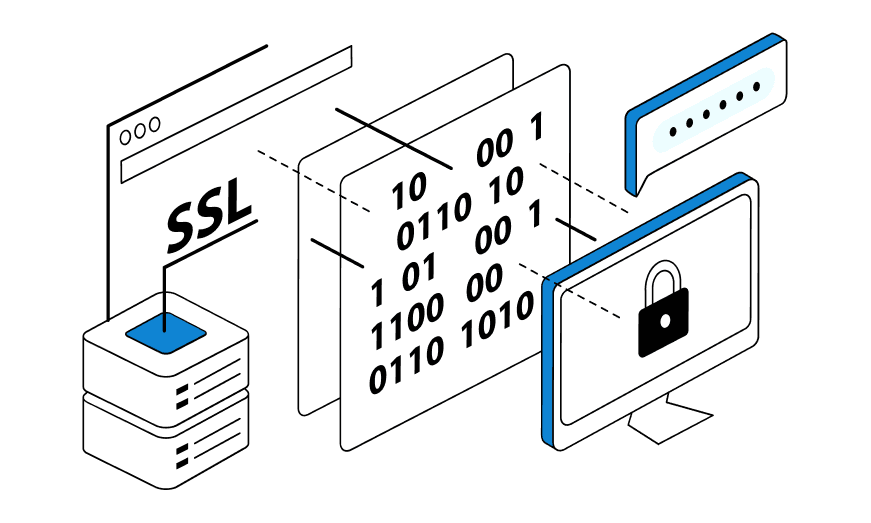
Amazon is not just the largest marketplace in the world, but a veritable ocean of data. Prices, ratings, descriptions, reviews, product availability, competitors — all of this is valuable information for analytics, marketing, and sales optimization. However, manually collecting information from Amazon is a tedious and time-consuming task. The solution? Web scraping.
In this article, you will learn how to collect data from Amazon using automated tools, what risks exist, and how to minimize them. We will also tell you what technologies, approaches, and proxies for protecting financial transactions you should use to avoid being blocked and ensure the security of your project.
Using web scraping for Amazon
Amazon scraping is the process of automatically extracting information from a website: product cards, categories, prices, discounts, reviews, and other content. This approach is especially popular among:
- resellers analyzing competitors;
- suppliers monitoring price dynamics;
- marketers collecting data for A/B testing and product popularity forecasting;
- SEO specialists evaluating the structure and content of competitive pages.
However, Amazon actively fights against automatic information gathering. Frequent requests from a single IP address, non-standard headers, suspicious activity — all of this can lead to a ban. That is why proxies are necessary to protect financial transactions and scripts that mimic the behavior of a live user.
In the following sections, we will take a detailed look at how to collect data from Amazon, which tools are suitable for scraping, and how to choose reliable proxies so that your automation does not end up with sanctions from the platform.
Key steps to start scraping
Before you start collecting data, you need to build a clear structure and prepare the technical foundation. How to set up Amazon scraping correctly? You need to understand how the platform works, what data is available, and how to minimize the risk of being blocked. Below are the key steps to help you get started effectively and safely.
Navigating Amazon layout and data components
The first step is to study the structure of Amazon pages. The platform regularly changes its HTML markup, adds dynamic elements, and hides blocks. Therefore, it is important to be able to accurately identify the necessary elements: titles, prices, ratings, availability, seller ID, and so on.
At this stage, it is important to configure selectors (XPath, CSS) accurately, especially if you are planning large-scale work. An error in the structure will result in the collection of outdated or distorted data.
Diagrams and summary tables
Once the data has been collected, it needs to be processed correctly. Integration with visualization tools (such as Google Data Studio, Excel, Power BI) helps to create clear summary tables and diagrams for analysis. This is convenient for both resellers and marketing departments conducting price and product range analysis.
This approach is especially useful for those who use proxies to collect marketing data — it is the combination of “data + visualization” that gives a real competitive advantage.
Integration with seller tools
Limiting yourself to just collecting information means not using the full potential of scraping. It is important to integrate data with a CRM system, inventory management system, or price monitoring. This allows you to update prices in real time, track inventory, and assess demand.
When using proxies for online commerce, it is especially important that the connection is stable and the data is clean and ready for further processing.
Ad bypass
Amazon has many ad units: sponsored cards, banners, special offers. If you don’t filter them, you may end up with distorted statistics or duplicate data. Therefore, it is important to be able to separate organic results from advertising results by excluding them at the selector level or by filtering the information that has already been collected. This is especially important for mass collection, as every extra line in the report can affect the analytics.
Mitigating blocking
Scraping settings for Amazon must include mechanisms to protect against blocking. The platform is sensitive to suspicious activity, so you should:
- randomize the User-Agent;
- set pauses between requests;
- simulate user actions (scrolling, hovering, transitions);
- avoid frequent visits to the same pages.
And, of course, the basis for stable operation is the use of proxies for online commerce. It is recommended to use resident or mobile proxies with good speed and geographic rotation. This allows you to bypass protection unnoticed and continue working without interruption.
Set a limit on scraping
Even if you follow all the rules, an excessive number of requests can raise suspicion at Amazon. Set limits on the depth of collection, frequency of updates, and number of simultaneous connections. It is especially important to follow these rules when working with multiple categories and products on a large scale.
In conjunction with proxies for collecting marketing data, limiting scraping helps maintain long-term access to Amazon and ensures the security of the project.

Advanced scraping techniques for Amazon
Once you have mastered the basic scraping methods, efficiency, automation, and reliability come to the fore. In this section, we will look at advanced scraping techniques on Amazon that will help you collect data faster, cleaner, and safer. You will learn how to use Python, how to automate uploads to Google Sheets, and how to avoid losing your work by backing it up. And, of course, we will discuss where and how to buy proxies for Amazon so that your parser works stably.
Scrape Amazon manually with Python
If you are looking for a flexible and powerful way to collect data, Python is the best choice. Libraries such as requests, BeautifulSoup, Selenium, or Scrapy allow you not only to collect HTML, but also to emulate user behavior, manage sessions, and bypass protection. This approach is ideal for niche projects and research tasks.
However, it is important to remember that Amazon actively fights against automated access. That is why you should ensure protection in advance using proxies from LTESocks or other trusted providers. This will not only help you avoid being blocked, but also speed up the data collection process. When choosing a proxy solution, it is important to consider: IP type (mobile, residential), speed, stability, and geolocation. If you don’t know where to start, consult with experts — proxy solutions for any business are now available in just one click.
Save Amazon data to Google Sheets
Collecting data is only half the battle. It is much more important to process and visualize it correctly. One of the most convenient ways to do this is to automatically upload data to Google Sheets. This allows you not only to track current information in real time, but also to share it with your team or clients.
For integration, you can use Python (via gspread and Google API) or ready-made plugins and tools. This works especially well in conjunction with configured IP rotations when you use proxies from LTESocks and want to maintain connection stability during daily updates.
Don’t forget: without stable connections, data can be downloaded with errors. That’s why it’s important to choose the best proxy for Amazon that won’t let you down when you need it.
Amazon backup and recovery
Sometimes scraping is not only about collecting current data, but also about long-term storage. If you regularly monitor prices, reviews, and search rankings, you will need an archive. Backups help you avoid losing historical data, which is especially important in the event of a failure, platform change, or API update.
The optimal solution is to store copies of uploads in cloud storage (Google Drive, Dropbox, AWS S3) and update them regularly. A reliable connection is also important here: if there are network interruptions, the upload may be incomplete. To prevent this from happening, use reliable proxy solutions for any business, including mobile or residential proxies from LTESocks, which provide a stable data flow.
If you are serious about Amazon analytics, sooner or later you will realize that you cannot do without a high-quality technical base. Therefore, buying a proxy for Amazon is not just a recommendation, but a prerequisite for stable and productive work.

Is Amazon web scraping worth the effort of automation?
If you are involved in e-commerce, marketing, reselling, or analytics, the answer is obvious: yes, it is worth it. Scraping Amazon gives you a competitive advantage through up-to-date data, flexibility, and independence from internal platform restrictions. But only on one condition: if you use reliable tools and approaches.
Choosing the best proxy for Amazon is not just a technical task, but the foundation of the entire process. Without a stable and anonymous connection, it will be impossible to collect data for a long time and safely. Especially when it comes to scaling, daily uploads, and integrations with other systems.
Automating scraping is not hacking, but a well-thought-out process of collecting public information. The main thing is to approach it responsibly, use only high-quality proxies, comply with ethical standards, and not violate platform restrictions.
FAQ
1. Is Amazon scraping legal?
- The use of public data is generally not prohibited, but mass automated collection may violate the platform’s terms of use. It is recommended to use official APIs or obtain permission.
2. What data can be extracted using web scraping?
- Prices, product names, ratings, reviews, availability, ASIN, categories, seller ID — everything that is displayed on the public page.
3. Which programming languages are suitable for Amazon scraping?
- Python is most commonly used because of its many libraries. JavaScript (Node.js) and PHP are also suitable for certain tasks.
4. How can I bypass Amazon’s blocks when scraping?
- Use IP address rotation through reliable proxies, CAPTCHA solvers, user behavior emulation, and set reasonable intervals between requests.
5. How much data can I collect without risk?
- There are no strict restrictions, but it is safer not to exceed a few hundred pages per day from a single IP address. Regular rotation and limiting requests significantly reduce risks.
6. Is there an alternative to Amazon scraping?
- Yes, Amazon offers an API for developers, and there are also paid data providers that offer structured downloads.
7. Can scraping be detected on Amazon?
- Yes. Amazon tracks behavior by IP, request frequency, headers, and cookies. To reduce the likelihood of detection, it is important to use the best proxies for Amazon, such as mobile or residential proxies with high anonymity.









